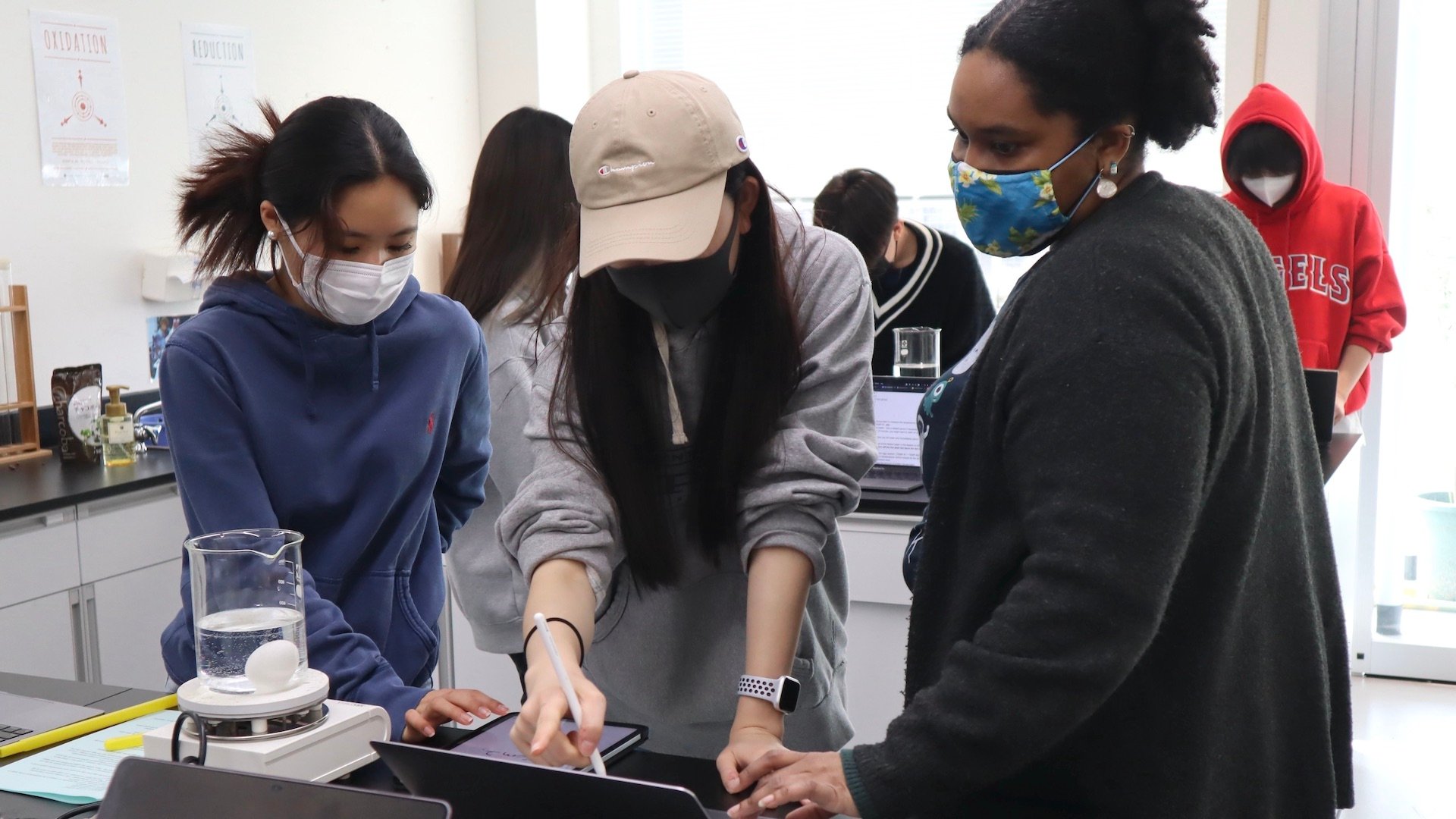
How many female scientists can you think of in 1 minute?
This is a question I posed to students in several classes this week. Most were able to think of Marie Curie, which is completely understandable. Society has held Marie Curie up as a fantastic example of what women have achieved in science — the first woman to win a Nobel Prize, the first person to win two Nobel Prizes, and the only person to win two Nobel Prizes in different categories. But outside of Curie, few students could name another female scientist unless they recalled those in the NIS Science Department over the past few years.
Coinciding with International Women’s Day, the Science Department at Nagoya International School recognized Women in Science this past week. With coloring contests in Primary and devoted lessons in Secondary, all students had the opportunity to learn about women that have made significant contributions to STEM fields. Lise Meitner, Mae Jemison, Ángeles Alvariño, Marjorie Stoneman Douglas, and Rosalind Franklin, all are women who overcame obstacles in order to pursue a subject they were passionate about.
The Hard Facts
Figures show that although there is no significant difference in ability between boys and girls in math and science, less than 35% of graduates in STEM subjects worldwide are women and there are even fewer in engineering and information technology. So why are women underrepresented in Science, Technology, Engineering, and Mathematics (STEM)? As I introduced my students to the diverse women of STEM, I found myself reflecting on my own journey into science, especially when cultural, social, and economic biases have made it harder for women and people of color to excel in science.
Finding Inspiration
As a child in Miami, I was fortunate to grow up in the middle of various ecosystems. The Atlantic Ocean to the east, the Everglades to the west, and a variety of different parks to explore throughout Florida. Visiting Jamaica, I was fascinated by the gullies and falls as we traveled around the island to see friends and family. Looking back, it made sense that I ended up pursuing a degree in Wildlife Ecology & Conservation. I participated in activities that were traditionally for girls — dance, Girl Scouts, cheerleading — but I also enjoyed helping my dad in his auto shop as he prepared his car for the next race or my grandfather while he reassembled electronics. Always considered quiet and shy, I was constantly observing the world around me and asking questions. Fortunately, I had several teachers that encouraged my inquiring nature which ultimately led to me pursuing a degree in STEM — to them I will forever be grateful.
Though I graduated high school thinking I would become a pediatrician or obstetrician, a volunteer experience in a middle school science classroom, influenced a change in course. I found myself mentoring a student on his science fair project in addition to tutoring. Sharing my enthusiasm for science, I ended up helping a low-performing student that hated science develop an appreciation for the subject while making learning gains. At that point, teaching, what had once been the “backup plan,” became the main plan and I continued my graduate studies in science education. I recall my advising professor, Dr. Linda Jones, telling me that I was a bit of a unicorn as not many minority females pursue STEM fields; however, by entering the classroom I had the opportunity to inspire so many to pursue careers in fields that would desperately need people in the future. Both in my home country and abroad, I have made it my mission to create engaging science lessons and provide experiences for those underrepresented groups in STEM.
Students Ponder Solutions
So collectively, how can we get more women and girls into STEM degrees at universities and careers? In talking to my students, we discussed the barriers that keep women out of science careers — teasing in school, a lack of encouragement, stereotypes, childcare, competition, marginalization, and bias. They also suggested ideas to promote girls & women in STEM at NIS — engaging lessons, more female science teachers/role models, a notice of summer program opportunities, and STEM clubs. But what about outside the classroom? Children are natural-born scientists, and parents should encourage that curiosity and sense of wonder, especially in Grades 8-10 when studies show girls tend to disengage in science and math. Family trips to science museums and zoos/aquariums can be a wonderfully informal, educational experience that all ages can enjoy. And in an effort to increase literacy, books like Women in Science: 50 Fearless Pioneers Who Changed the World and The Princess and the Petri Dish are wonderful additions to any library.
Women have contributed to some of the most crucial scientific advancements throughout the years and we must try to encourage more girls & women to get into STEM fields of work. And most importantly, appreciate them when they are there.
“When we invest in women and girls, we are investing in the people who invest in everyone else.” ~Melinda Gates



